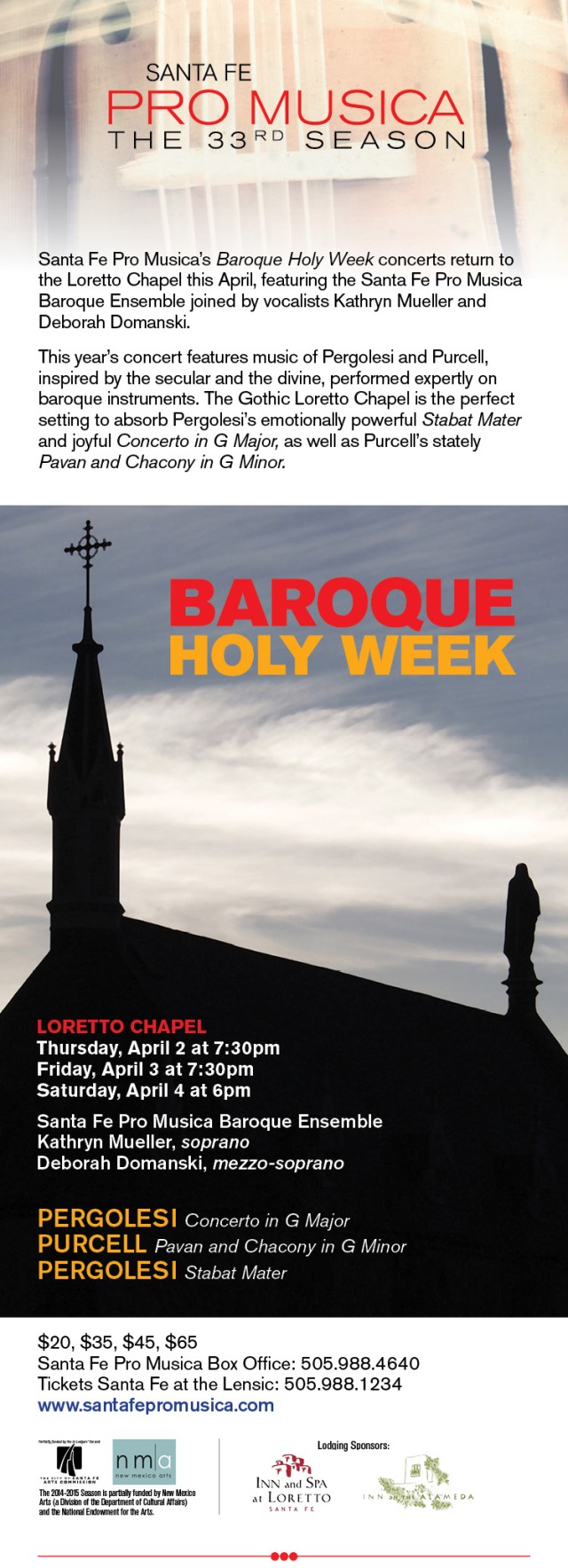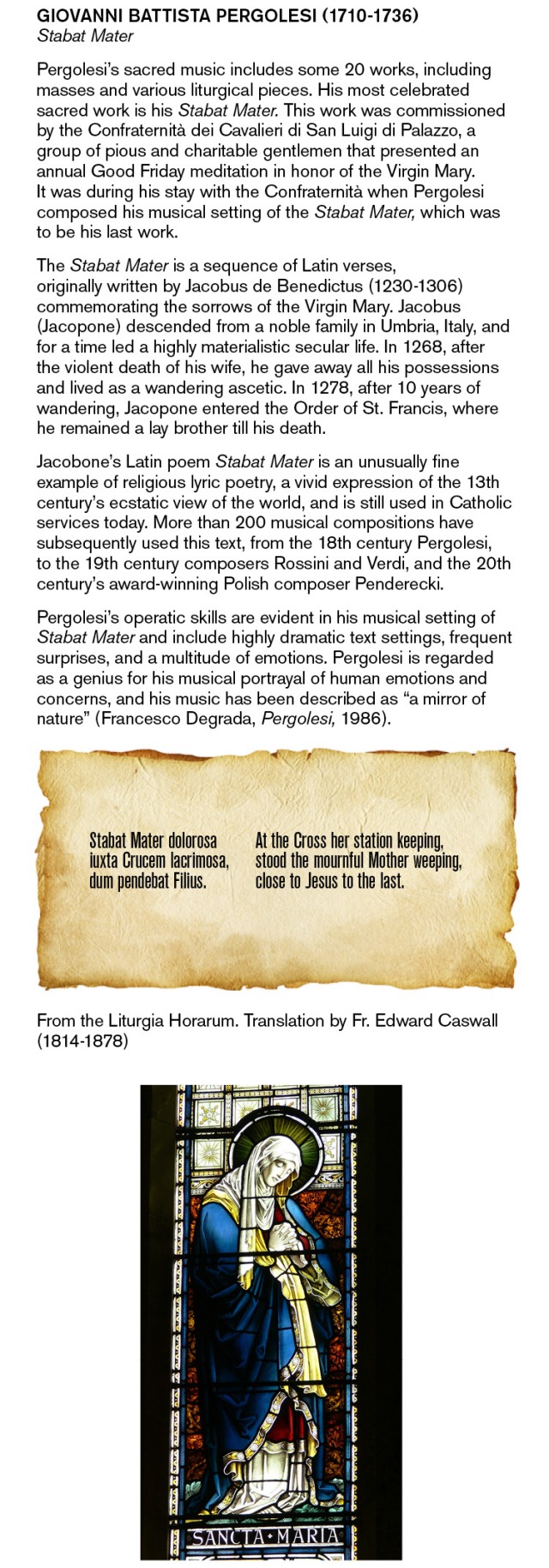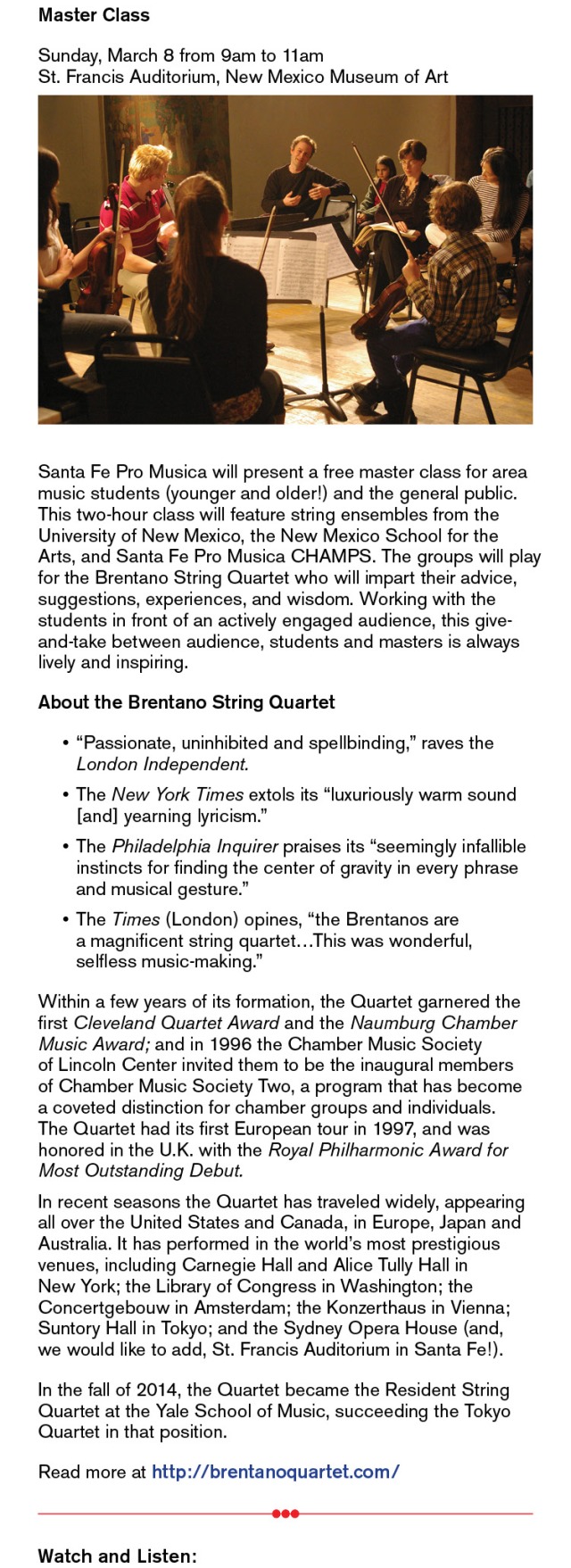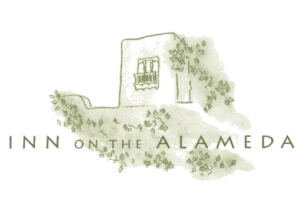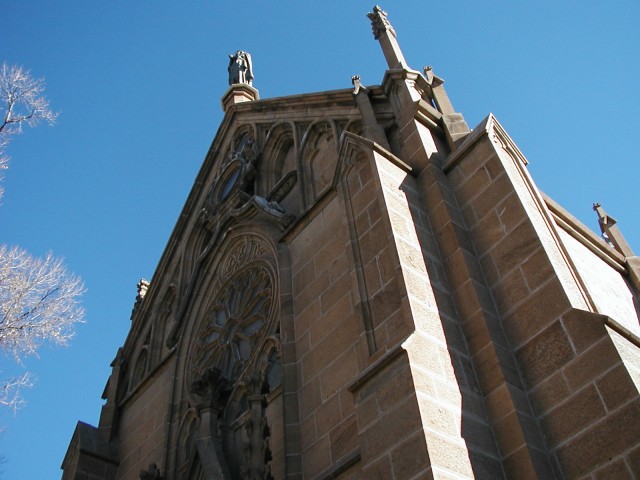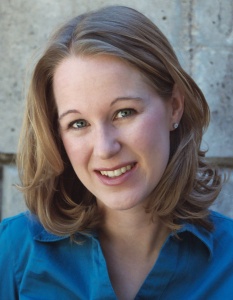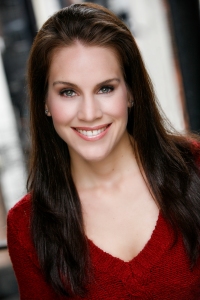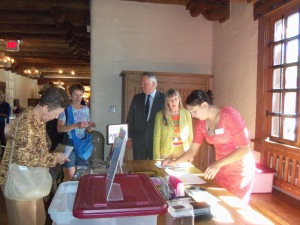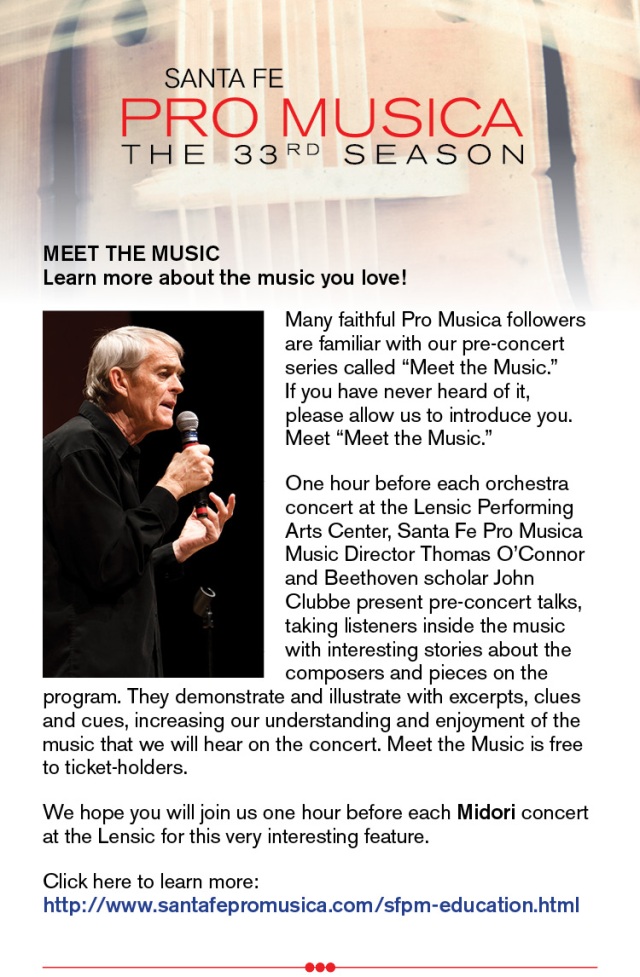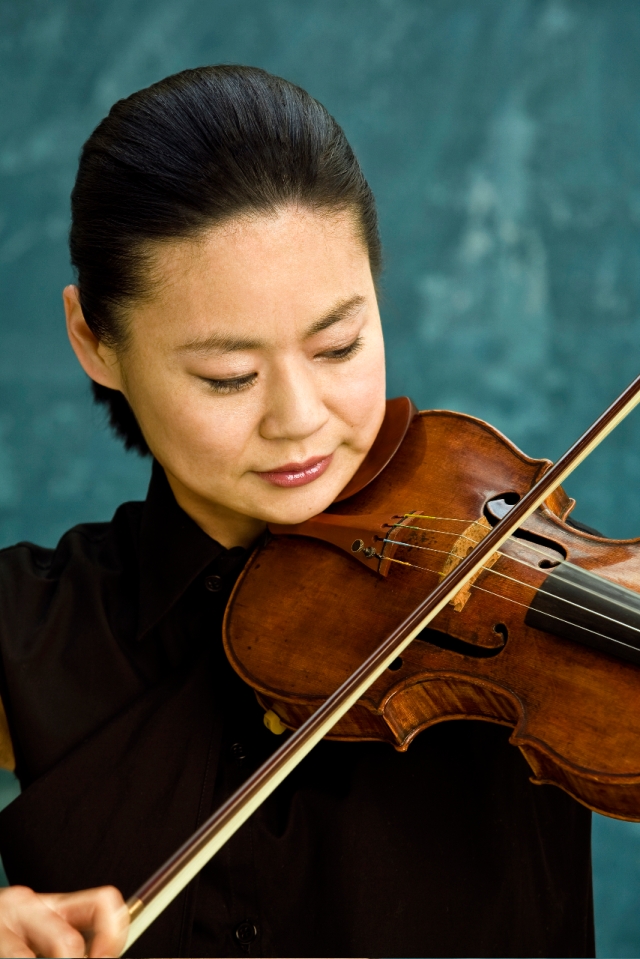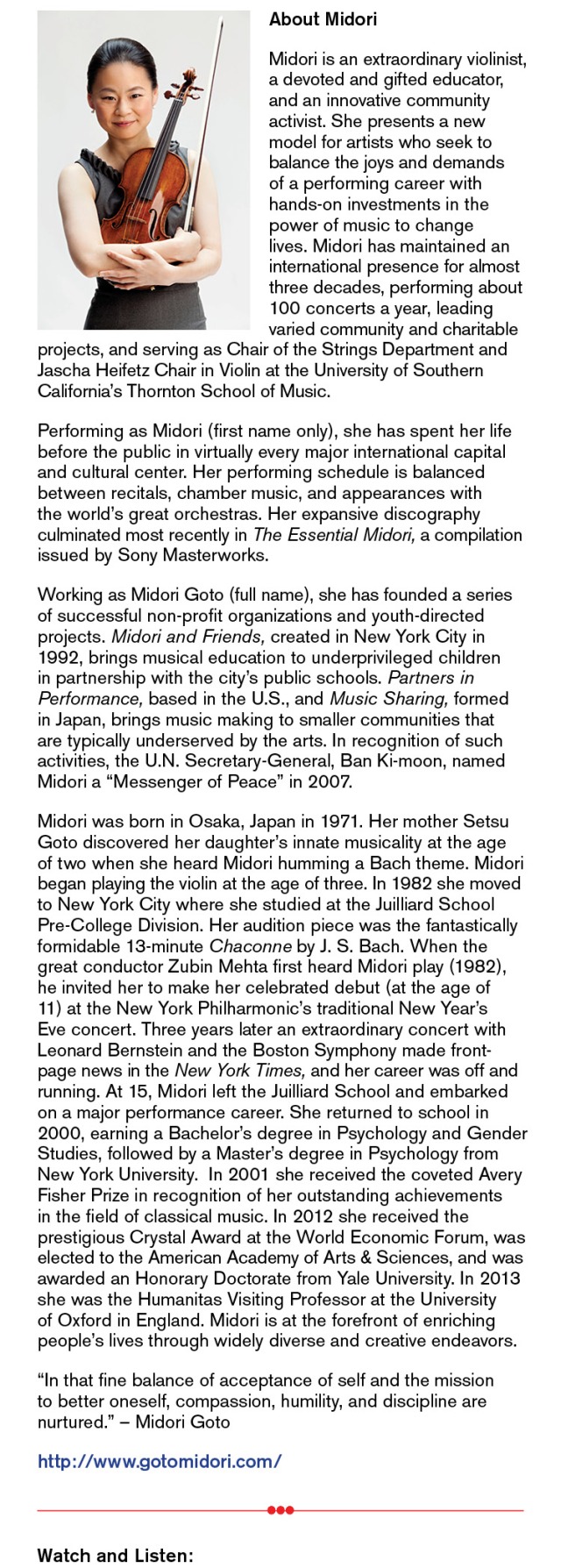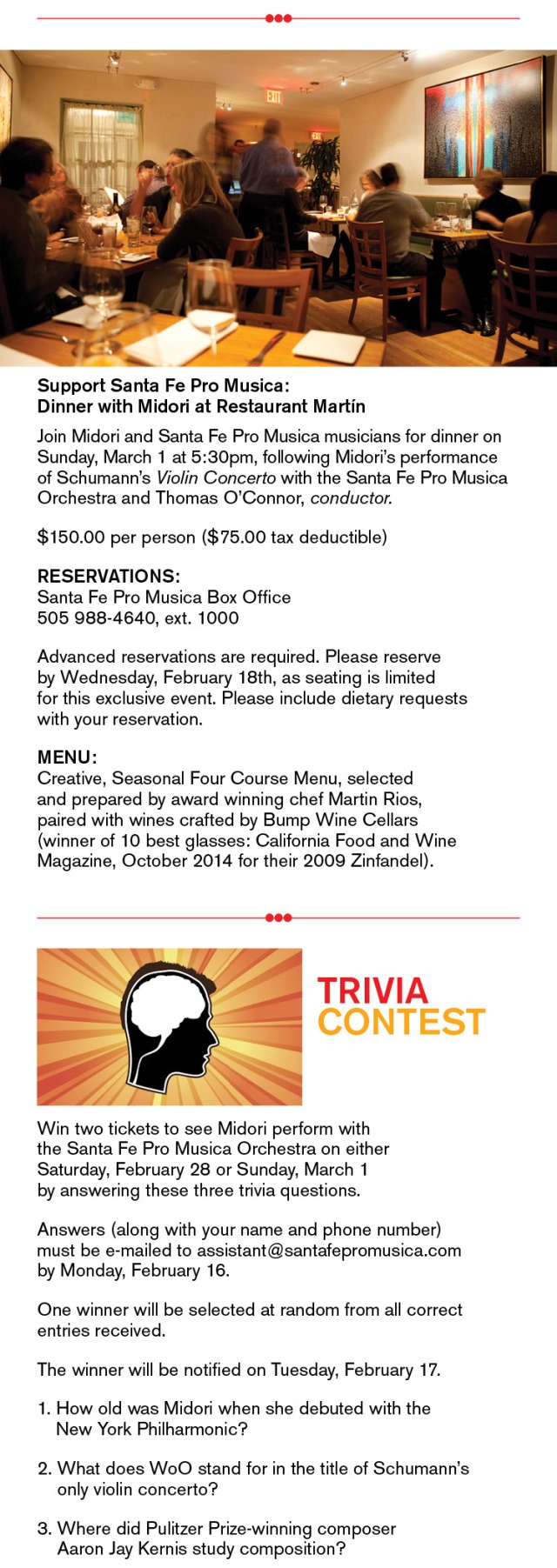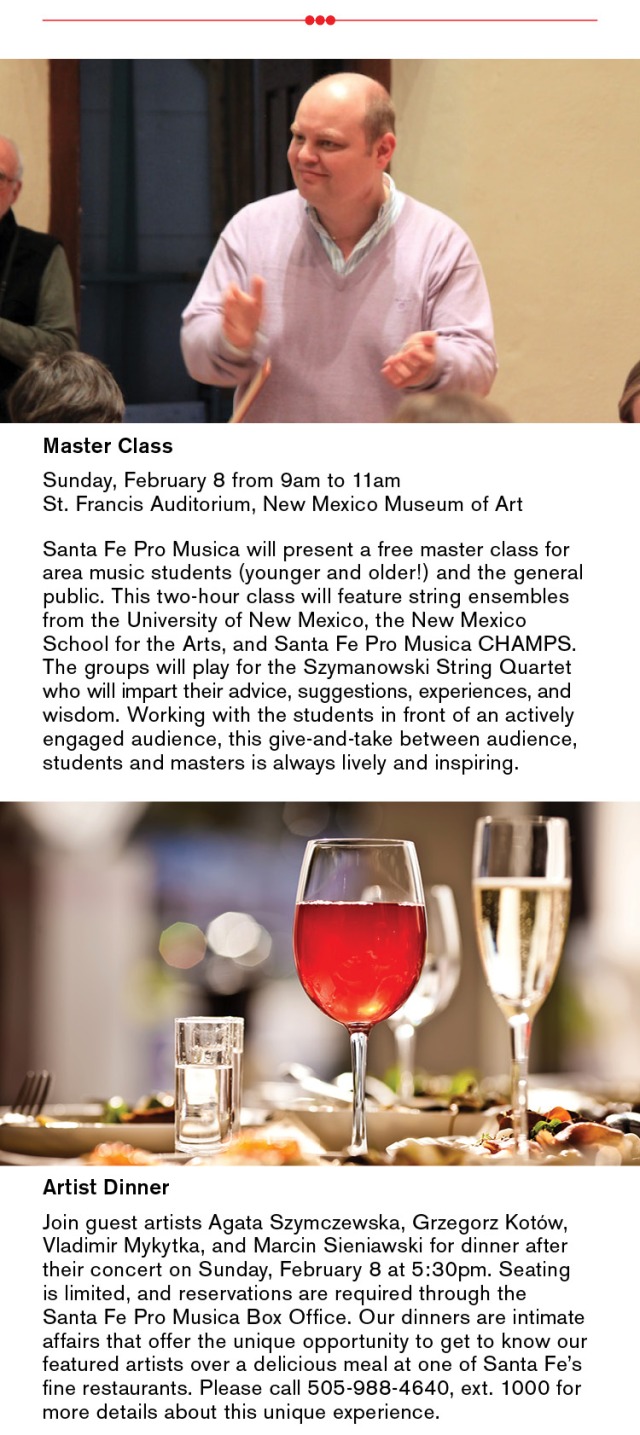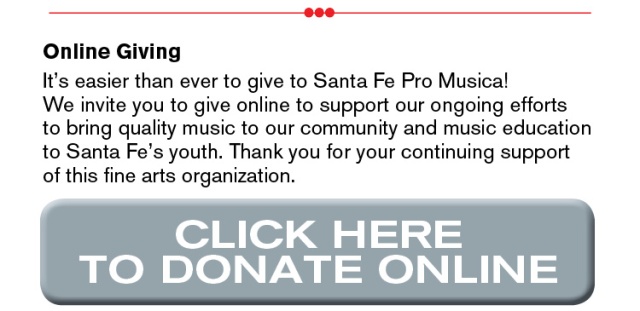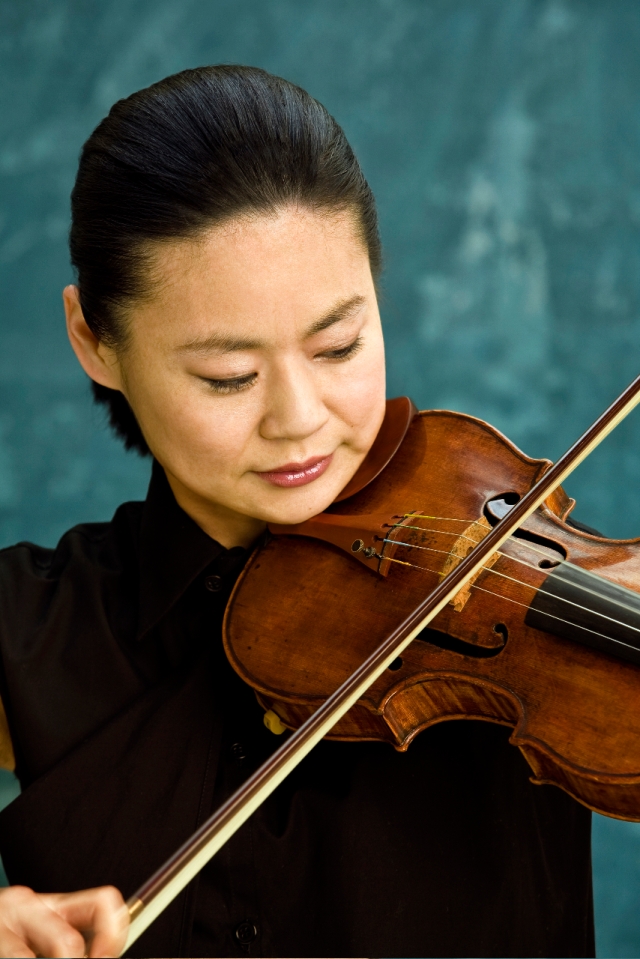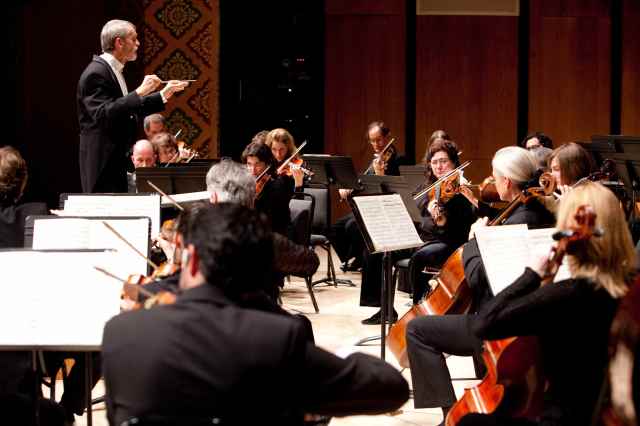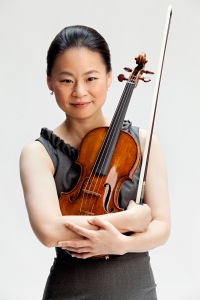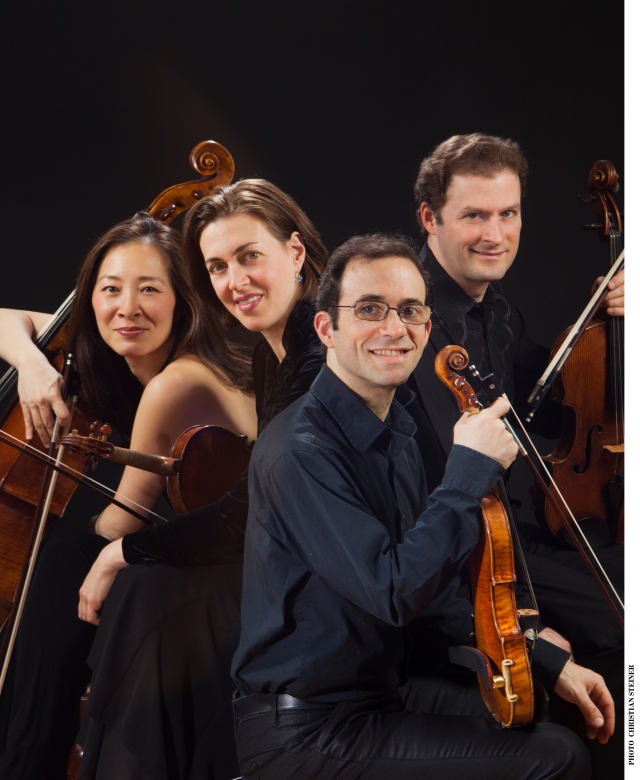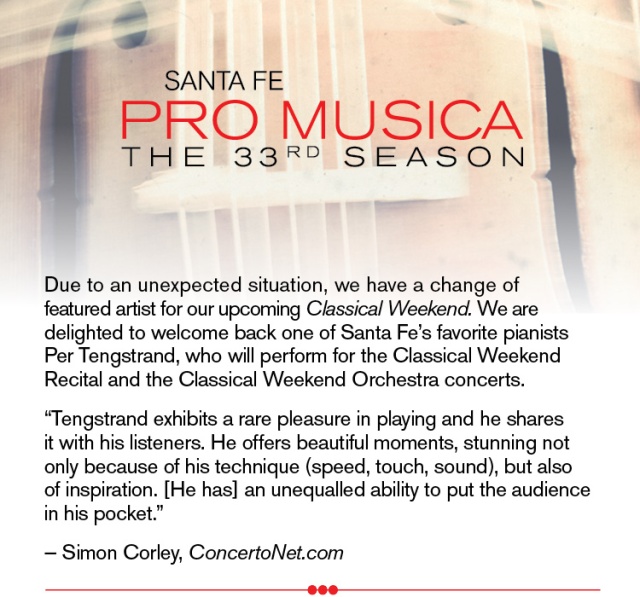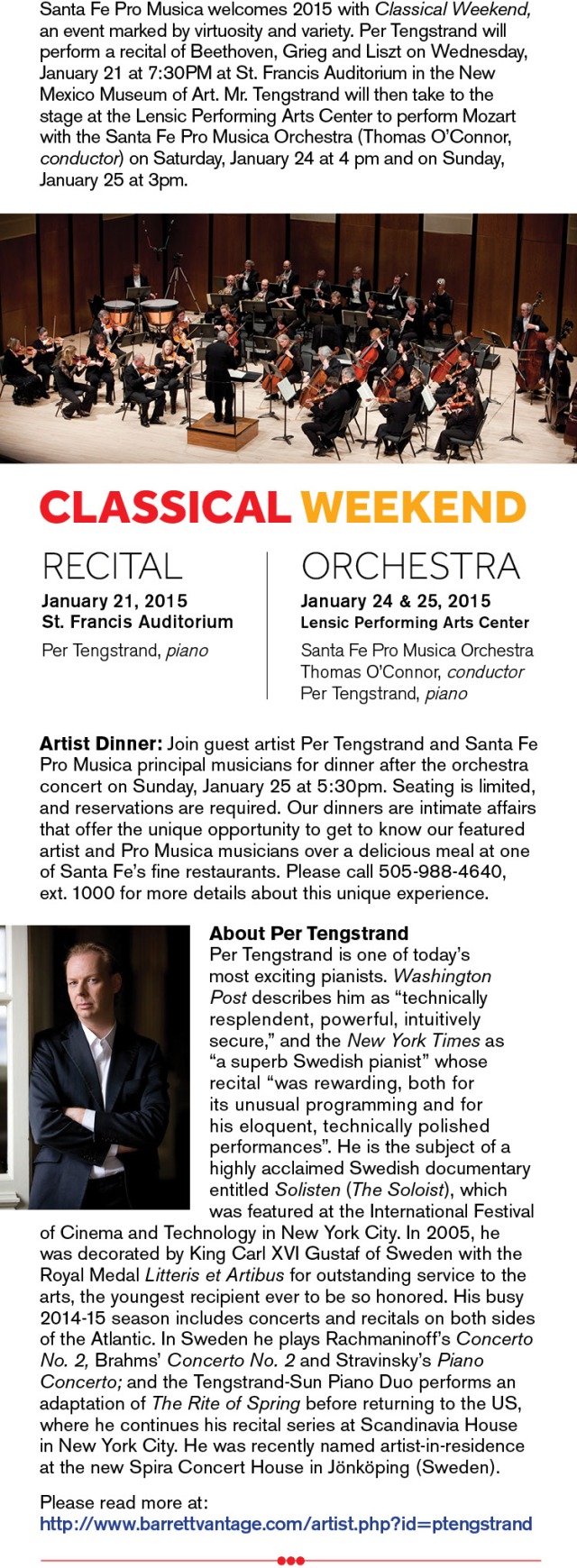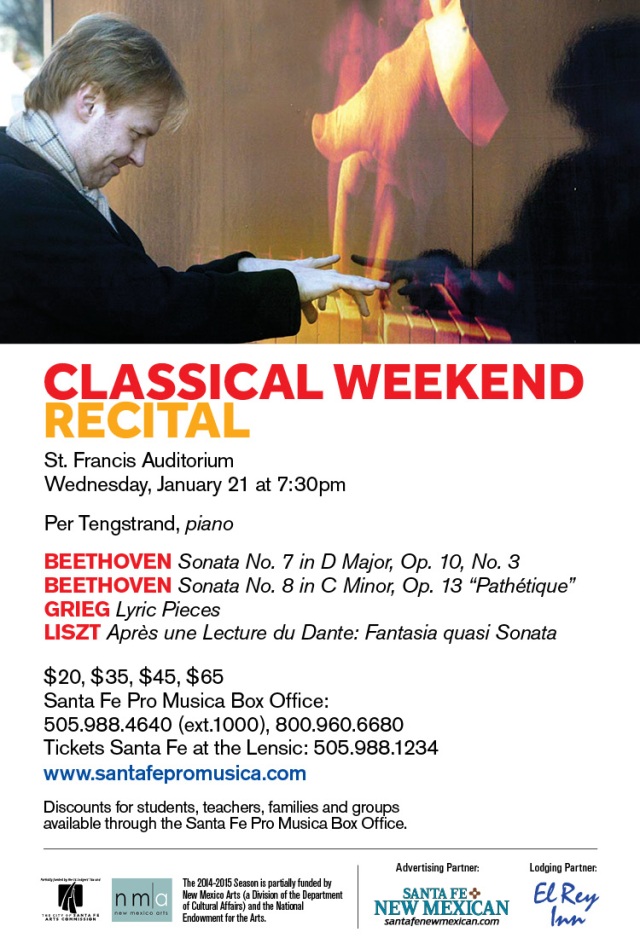© Santa Fe Pro Musica 2015
Brentano String Quartet, March 8, 2015
Beethoven, Kernis & Schumann. Oh, my!
WHAT:
Midori
Santa Fe Pro Musica Orchestra
Thomas O’Connor, conductor
Midori, violin
WHEN:
Saturday, February 28, 2015 at 4pm
Sunday, March 1, 2015 at 3pm
WHERE:
Lensic Performing Arts Center
211 West San Francisco Street
Santa Fe, NM 87501
PROGRAM:
Beethoven Symphony No. 8 in F Major, Op. 93
Kernis Musica Celestis
Schumann Violin Concerto in D Minor, WoO23
TICKETS: $20, $35, $45, $65 at the Santa Fe Pro Musica Box Office (505) 988-4640, Tickets Santa Fe at The Lensic (505) 988-1234, or online at www.santafepromusica.com
Discounts for students, teachers, groups, and families are available exclusively through the Santa Fe Pro Musica Box Office.
Meet the Music one hour before each concert. Learn more about the music you love!
Thomas O’Connor, Santa Fe Pro Musica Conductor and Music Director, will present a “behind the scenes” discussion of the music one hour prior to each concert at the Lensic Performing Arts Center – Free to ticket holders.
Presenting the Szymanowski Quartet
Santa Fe Pro Musica presents Midori
Santa Fe Pro Musica
Midori
Santa Fe Pro Musica Orchestra
Thomas O’Connor, conductor
Midori, violin
Saturday, February 28, 2015 at 4pm
Sunday, March 1, 2015 at 3pm
Lensic Performing Arts Center
Santa Fe, NM — The Santa Fe Pro Musica Orchestra presents a must-see concert featuring super star violinist Midori. The concert opens with Beethoven’s Symphony No. 8 in F Major, Op. 93, followed by Musica Celestis by Aaron Kernis. For the grand finale, Midori takes to the stage to perform Schumann’s Violin Concerto in D Minor.
The New York Times describes Midori: “There was a touching sense that much more was being implied than could be said, that here was someone smiling through tears – or weeping through laughter. The ambiguity was complete, and right.”
WHAT:
Midori
Santa Fe Pro Musica Orchestra
Thomas O’Connor, conductor
Midori, violin
WHEN:
Saturday, February 28, 2015 at 4pm
Sunday, March 1, 2015 at 3pm
WHERE:
Lensic Performing Arts Center
211 West San Francisco Street
Santa Fe, NM 87501
PROGRAM:
Beethoven Symphony No. 8 in F Major, Op. 93
Kernis Musica Celestis
Schumann Violin Concerto in D Minor, WoO23
TICKETS: $20, $35, $45, $65 at the Santa Fe Pro Musica Box Office (505) 988-4640, Tickets Santa Fe at The Lensic (505) 988-1234, or online at www.santafepromusica.com
Discounts for students, teachers, groups, and families are available exclusively through the Santa Fe Pro Musica Box Office.
Meet the Music one hour before each concert. Learn more about the music you love!
Thomas O’Connor, Santa Fe Pro Musica Conductor and Music Director, will present a “behind the scenes” discussion of the music one hour prior to each concert at the Lensic Performing Arts Center – Free to ticket holders.
Dinner with Midori at Restaurant Martín
March 1, 2015 at 5:30pm, following Midori’s performance of Schumann’s Violin Concerto with the Santa Fe Pro Musica Orchestra and Thomas O’Connor, conductor.
$150.00 per person ($75.00 tax deductible) – Advanced reservations required.
Creative, Seasonal Four Course Menu, selected and prepared by award winning chef Martin Rios, paired with wines crafted by Bump Wine Cellars (winner of 10 best glasses: California Food and Wine Magazine, October 2014 for their 2009 Zinfandel).
RESERVATIONS: Santa Fe Pro Musica Box Office, 505-988-4640, ext. 1000
Please reserve by Wednesday, February 18, 2015 as seating is limited for this exclusive event. Please include dietary requests with your reservation.
Platinum Lodging Partner
Lodging Partner
Program notes by Carol Redman
Beethoven, Kernis, and Schumann
Ludwig van Beethoven (1770-1827)
Symphony No. 8 in F Major, Op. 93
Scored for pairs of flutes, oboes, clarinets, bassoons, horns and trumpets, plus timpani and strings
Beethoven completed his 7th and 8th symphonies in quick succession in the spring and summer of 1812. Although his life was laden with difficulties (money, work, romance, family and health), 1812 was an especially hard year. He was involved in a love affair, probably with a married woman, and unleashed his despair in the famous “Immortal Beloved” letter. He then fled to the home of his brother Johann who threw him out after getting too much unsolicited advice about his choice of wife. And, finally, Beethoven realized he was truly and irrevocably deaf. And what evidence for all this turmoil is there in his Symphony No. 8? None at all! It is full of good cheer, musical jokes and lebensfreude.
The first movement (Allegro vivace con brio, very fast and fiery) is dominated by a buoyant theme, occasionally veering off into the “wrong” keys. For the second movement (Allegretto scherzando, a little fast, jokingly), he pokes fun at the newly invented metronome; a device that keeps a steady beat for rhythmically challenged musicians. The third movement (Tempo di Menuetto) spoofs its dainty and refined origin as a courtly dance, with displaced accents, false downbeats and mixed up meters sure to trip up anyone who attempts to dance to it. The last movement (Allegro vivace, very fast) is full of musical hi-jinks. The music goes to some very unusual places using some very inappropriate notes. The coda (literally “tail”) is also a joke. At 236 measures long, it doubles the length of the movement (here the tail wags the dog!). And, finally, Beethoven appears to lampoon composers who resort to pounding the last few chords as many times as needed to get the music to stop, by blowing up his own conclusion to laughable proportions. Once he steers us back to where we need to be (F Major), he then caricatures this construct by drawing out his own conclusion for 23 measures, during which that final F-major chord is repeated no fewer than 45 times, rather like kids asking “aren’t we there yet?”
Aaron Jay Kernis (b. 1960)
Musica Celestis
Scored for string orchestra
Kernis is an award winning American composer, winning three BMI Foundation Composer Awards, the Grawemeyer Award (2002), a Pulitzer Prize (1998), and a Grammy nomination. He is currently on the Yale School of Music faculty.
Kernis writes that his Musica Celestis was inspired by the medieval title’s reference to heavenly angels singing praises of God. Musica Celestis, originating as a movement of his first string quartet (1990), was arranged for string orchestra a year later. The music begins with a series of sustained chords whose ethereal sonorities recall the opening moments of the Prelude to Wagner’s Lohengrin. Then long strands of melody entwine in counterpoint and suggest another American composition for string orchestra, Samuel Barber’s Adagio for Strings. Kernis’ music follows a simple, spacious melodic and harmonic pattern through a number of variations, and is framed by an introduction and coda. It begins very quietly, builds to an intense and impassioned climax, and subsides to a quiet conclusion.
Robert Schumann (1810-1856)
Violin Concerto in D Minor, WoO 23
Scored for solo violin, pairs of flutes, oboes, clarinets, bassoons, horns and trumpets, plus timpani and strings
“Although it is difficult to characterize succinctly Schumann’s large and varied output, it is fair to say that Romantic reverie, mercurial caprice, solemn grandeur, and ecstatic effusion all have their place in it” (Paul Schiavo, Seattle Symphony Orchestra).
Schumann came from a family that was plagued by mental illness. He struggled with it himself for most of his life, relentlessly writing music through bouts of contemplated suicide and months of depression. Finally, in February 1854, increasingly tortured by hallucinations, he asked to be taken to an asylum, where he died on July 29, 1856.
Schumann wrote his only violin concerto late in 1853, his last major work, and intended it for Joseph Joachim, one of the 19th century’s greatest violinists. Joachim played through the concerto for Schumann at an orchestra rehearsal, but never performed it. Instead, he ignored the piece, which he considered not up to Schumann’s usual standards, implying that he felt the concerto’s music reflected Schumann’s declining mental state.
In 1907, after Joachim’s death, the concerto was given to the Prussian State Library. Here it remained forgotten until 1937 when the Hungarian violinist Jelli d’Aranyi (1893-1966) claimed to have contacted Schumann’s spirit and was told the concerto’s whereabouts. It must be noted, however, that d’Aranyi was the grandniece of Joseph Joachim, so it is quite plausible that she had some insider’s information. The great violinist Yehudi Menuhin soon received a copy and declared it was “romantic, heroic, supplicating, and tender” and that “this concerto is the bridge between the Beethoven and the Brahms concertos.” He performed it in 1938. The next performance was 23 years later (1961) with Henryk Szeryng and the Boston Symphony. Another 42 years go by until the next performances by Leonidas Kavakos and the Philadelphia Orchestra (2003), Gidon Kremer with Staatskapelle Berlin (2004), and a recording with Joshua Bell and the Cleveland Orchestra (2010). Only now, more than 150 years later, Schumann’s Violin Concerto has entered the standard violin repertory and is recognized as one of his most moving works.
About Midori
Midori is an extraordinary violinist, a devoted and gifted educator, and an innovative community activist. She presents a new model for artists who seek to balance the joys and demands of a performing career with hands-on investments in the power of music to change lives. Midori has maintained an international presence for almost three decades, performing about 100 concerts a year, leading varied community and charitable projects, and serving as Chair of the Strings Department and Jascha Heifetz Chair in Violin at the University of Southern California’s Thornton School of Music.
Performing as Midori (first name only), she has spent her life before the public in virtually every major international capital and cultural center. Her performing schedule is balanced between recitals, chamber music, and appearances with the world’s great orchestras. Her expansive discography culminates most recently in The Essential Midori, a compilation issued by Sony Masterworks.
Working as Midori Goto (full name), she has founded a series of successful non-profit organizations and youth-directed projects. Midori and Friends, created in New York City in 1992, brings musical education to underprivileged children in partnership with the city’s public schools. Partners in Performance, based in the U.S., and Music Sharing, formed in Japan, brings music making to smaller communities that are typically underserved by the arts. In recognition of such activities, the U.N. Secretary-General, Ban Ki-moon, named Midori a “Messenger of Peace” in 2007.
Midori was born in Osaka, Japan in 1971. Her mother Setsu Goto discovered her daughter’s innate musicality at the age of two when she heard Midori humming a Bach theme. Midori began playing the violin at the age of three. In 1982 she moved to New York City where she studied at the Juilliard School Pre-College Division. Her audition piece was the fantastically formidable 13-minute Chaconne by J. S. Bach. When the great conductor Zubin Mehta first heard Midori play (1982), he invited her to make her celebrated debut (at the age of 11) at the New York Philharmonic’s traditional New Year’s Eve concert. Three years later an extraordinary concert with Leonard Bernstein and the Boston Symphony made front-page news in the New York Times, and her career was off and running. At 15, Midori left the Juilliard School and embarked on a major performance career. She returned to school in 2000, earning a Bachelor’s degree in Psychology and Gender Studies, followed by a Master’s degree in Psychology from New York University. In 2001 she received the coveted Avery Fisher Prize in recognition of her outstanding achievements in the field of classical music. In 2012 she received the prestigious Crystal Award at the World Economic Forum, was elected to the American Academy of Arts & Sciences, and was awarded an Honorary Doctorate from Yale University. In 2013 she was the Humanitas Visiting Professor at the University of Oxford in England. Midori is at the forefront of enriching people’s lives through widely diverse and creative endeavors.
“In that fine balance of acceptance of self and the mission to better oneself, compassion, humility, and discipline are nurtured.” – Midori Goto
About Santa Fe Pro Musica
Santa Fe Pro Musica, founded in 1980, is a non-profit performing arts organization dedicated to inspiring and educating audiences of all ages through the performance of great music. Pro Musica performs a varied repertoire, covering four centuries of music on modern and baroque instruments, including works for chamber orchestra, small ensemble and large-scale works for orchestra and chorus. In 2008, Pro Musica’s recording of Gustav Mahler’s Das Lied von der Erde (chamber arrangement by Schoenberg) was nominated for a GRAMMY® award in the classical category of Best Small Ensemble Performance. In August of 2012, Santa Fe Pro Musica Recordings produced a CD of Conrad Tao, pianist, performing Mozart Piano Concertos No. 17 and No. 25. In addition to gaining national recognition over its 32 years for its artistry in performance, Santa Fe Pro Musica offers some of the most distinguished educational opportunities in northern New Mexico, reaching thousands of students every year with a Youth Concert series, a team-building, ensemble-training program, and a master class series for New Mexico School for the Arts students.
The 2014-2015 Season is partially funded by the City of Santa Fe Arts Commission, the 1% Lodgers Tax, and New Mexico Arts (a Division of the Department of Cultural Affairs).
For more information, please visit our website: www.santafepromusica.com
© Santa Fe Pro Musica 2015
Santa Fe Pro Musica presents the Brentano String Quartet
Brentano String Quartet
Mark Steinberg, violin
Serena Canin, violin
Misha Amory, viola
Nina Lee, cello
Sunday, March 8, 2015 at 3pm
St. Francis Auditorium, New Mexico Museum of Art
Santa Fe, NM — Santa Fe Pro Musica presents the internationally acclaimed Brentano String Quartet in concert at the St. Francis Auditorium (New Mexico Museum of Art) performing works of Haydn, MacMillian and Schubert. Newly appointed Quartet-in-Residence at the Yale School of Music, this quartet takes its name from Beethoven’s “Immortal Beloved.”
“The Brentano String Quartet is something special…Their music-making is private, delicate and fresh, but by its very intimacy and importance it seizes attention.”
–The New York Times
WHAT:
Brentano String Quartet
Mark Steinberg, violin
Serena Canin, violin
Misha Amory, viola
Nina Lee, cello
WHEN:
Sunday, March 8 at 3pm
WHERE:
St. Francis Auditorium, New Mexico Museum of Art
107 West Palace Avenue
Santa Fe, NM 87501
TICKETS: $20, $35, $45, $65 at the Santa Fe Pro Musica Box Office (505) 988-4640, Tickets Santa Fe at The Lensic (505) 988-1234, or online at www.santafepromusica.com
Discounts for students, teachers, groups, and families are available exclusively through the Santa Fe Pro Musica Box Office.
Media Partner:
Program:
Haydn String Quartet in B-Flat Major, Op. 50, No. 1
MacMillan String Quartet No. 3 (2007)
Schubert String Quartet No. 14 in D Minor, D. 810 “Death and the Maiden”
Notes by Carol Redman
Franz Joseph Haydn (1732-1809)
String Quartet in B-Flat Major, Op. 50, No. 1
The string quartet was one of Haydn’s favorite forms, and his work in this field evolved throughout his long career, resulting in almost 70 quartets. In 1781, Haydn completed his Opus 33 set of six string quartets, the same year that Mozart moved to Vienna. While in Vienna, Haydn and Mozart became friends and played string quartets together in Mozart’s apartment, with Mozart playing the viola and Haydn playing violin.
An interesting interchange reflects the mutual influence and respect of these two Viennese masters. Inspired by Haydn’s Op. 33 quartets, Mozart composed a set of six quartets in 1785 and dedicated them to Haydn (“Receive them kindly, with the partiality of a father’s eye”); Haydn then returned the favor. Inspired by Mozart’s latest quartets written during 1785-86, Haydn wrote another set of quartets, his Opus 50 (1787). Ultimately however, Haydn dedicated this set to King Frederick William II of Prussia (1744-1797), an amateur cellist and an enthusiastic patron of the arts who was able to pay for them.
James MacMillan (b. 1959)
String Quartet No. 3
Born, raised and educated in Scotland, MacMillan is the pre-eminent Scottish composer of his generation. He has received commissions from leading opera companies, orchestras, and soloists, including the great cellist Rostropovich, the Scottish Chamber Orchestra, Scottish Parliament, BBC Philharmonic, Netherlands Radio Orchestra, Westminster Cathedral, the Welsh National Opera, and others. When the Scottish Parliament was reconvened in 1999 (after 292 years of submission to the Parliament of Great Britten), MacMillan composed the fanfare to accompany the Queen into the chamber. In 2010 he wrote a new mass to be sung during the visit of Pope Benedict XVI to Great Britain. MacMillan’s Roman Catholic faith has inspired many of his works. Scottish traditional music also has a profound influence on his music. And he often uses familiar themes, even subliminally, which makes his music not only accessible but also hauntingly familiar.
Macmillan speaks of the melodic quality of his third string quartet, especially in the lyrical first movement. The second movement is a dark maelstrom of ominous figures, and one of MacMillan’s most fascinatingly strange creations. Lyricism returns in the final movement, which is the most conservative and reassuringly familiar of the three. “MacMillan’s String Quartet No. 3 operates at the boundary between the physical and the ethereal, between sounds and silence” (San Francisco Chronicle).
Franz Schubert (1797-1828)
String Quartet No. 14 in D Minor, D. 810 “Death and the Maiden”
Schubert began composing string quartets when he was thirteen, initially to play with his family. His two brothers were violinists, his father played the cello, and Schubert took the viola part. Over the course of his short life, he composed 15 string quartets. In Schubert’s early quartets, it is primarily the first violin that carries the melody with the other instruments playing supporting roles. In his later quartets, the part writing is more adventuresome, each instrument bringing its own character and presence to the music and creating a conversation among equals. The later quartets, were written neither as commissions, nor for home audiences, but as intimately personal expressions. “The string quartet had become a vehicle for conveying to the world his inner struggles” (Walter Cobbett, Cobbett’s Cyclopedic Survey of Chamber Music, 1963).
Schubert’s String Quartet No. 14 “Death and the Maiden” is one of the pillars of the chamber music repertoire. It was composed in 1824 after Schubert suffered through a serious illness and realized that he might be dying. The quartet is named for a theme used in the second movement, but the essence of the theme is apparent in all four movements. Schubert borrowed this theme from a song he wrote in 1817, taking his text from a poem by Matthias Claudius (1740-1815), and transforming it into a death knell about the terror and comfort of death. Throughout the quartet, Schubert evokes Death in all its various guises, from harsh to gentle. Furthermore, he chooses the key of D minor, a key that he generally reserved for songs of death, penitence, shadowy dreams, and shrouded moonlight. The quartet was first played in 1826 in a private home and was not published until 1831, three years after Schubert’s death.
The poem recounts an old myth wherein Death demands a pre-nuptial night with a bride-to-be. If she declines, Death will take her betrothed on their wedding day.
The Maiden
Oh! Leave me! Please leave me!
You grisly man of bone!
Go! Leave me alone.
Leave me alone!
Death
Give me your hand, fair and tender maiden,
For I am a friend, and do not punish.
Take courage now, and very soon,
You shall sleep gently in my arms.
Watch and Listen:
About the Brentano String Quartet
Since its inception in 1992, the Brentano String Quartet has appeared throughout the world to popular and critical acclaim. “Passionate, uninhibited and spellbinding,” raves the London Independent; the New York Times extols its “luxuriously warm sound [and] yearning lyricism”; the Philadelphia Inquirer praises its “seemingly infallible instincts for finding the center of gravity in every phrase and musical gesture”; and the Times (London) opines, “the Brentanos are a magnificent string quartet…This was wonderful, selfless music-making.” Within a few years of its formation, the Quartet garnered the first Cleveland Quartet Award and the Naumburg Chamber Music Award; and in 1996 the Chamber Music Society of Lincoln Center invited them to be the inaugural members of Chamber Music Society Two, a program which was to become a coveted distinction for chamber groups and individuals.
The Quartet is named for Antonie Brentano, whom many scholars consider to be Beethoven’s “Immortal Beloved”, the intended recipient of his famous love confession.
Read more at brentanoquartet.com
About Santa Fe Pro Musica
Santa Fe Pro Musica, founded in 1980, is a non-profit performing arts organization dedicated to inspiring and educating audiences of all ages through the performance of great music. Pro Musica performs a varied repertoire, covering four centuries of music on modern and baroque instruments, including works for chamber orchestra, small ensemble and large-scale works for orchestra and chorus. In 2008, Pro Musica’s recording of Gustav Mahler’s Das Lied von der Erde (chamber arrangement by Schoenberg) was nominated for a GRAMMY® award in the classical category of Best Small Ensemble Performance. In August of 2012, Santa Fe Pro Musica Recordings produced a CD of Conrad Tao, pianist, performing Mozart Piano Concertos No. 17 and No. 25. In addition to gaining national recognition over its 32 years for its artistry in performance, Santa Fe Pro Musica offers some of the most distinguished educational opportunities in northern New Mexico, reaching thousands of students every year with a Youth Concert series, a team-building, ensemble-training program, and a master class series for New Mexico School for the Arts students.
The 2014-2015 Season is partially funded by the City of Santa Fe Arts Commission, the 1% Lodgers Tax, and New Mexico Arts (a Division of the Department of Cultural Affairs).
For more information, please visit our website: www.santafepromusica.com
© Santa Fe Pro Musica 2015
Virtuosity meets Variety in Santa Fe Pro Musica’s Classical Weekend
Pro Musica plus pianist Per Tengstrand
Per Tengstrand with the Santa Fe Pro Musica Orchestra and Thomas O’Connor at the Lensic Performing Arts Center:
Watch and Listen:
Platinum Lodging Partner:
© Santa Fe Pro Musica 2014

